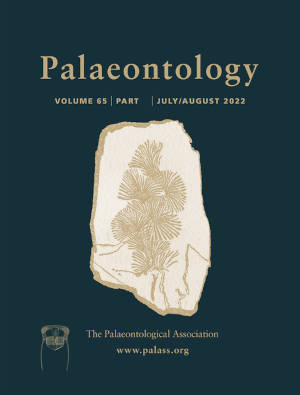Article: Feeding habits of the Middle Triassic pseudosuchian Batrachotomus kupferzellensis from Germany and palaeoecological implications for archosaurs
Publication: Palaeontology
Volume:
65
Part:
3
Publication Date:
2022
Article number:
e12597
Author(s):
Eudald Mujal, Christian Foth, Erin E. Maxwell, Dieter Seegis, and Rainer R. Schoch
Abstract
Abstract Bite traces on fossil bones are key to deciphering feeding ecology and trophic interactions of vertebrate past ecosystems. However, similarities between traces produced by different carnivorous taxa with similar dentitions, and misidentifications due to equifinality, hinder confident identifications of the bite makers. Here, we correlate bite traces with macroscopic wear and microanatomy of the teeth of the pseudosuchian archosaur Batrachotomus kupferzellensis from the Triassic Lower Keuper fossil lagerstätten (southern Germany), untangling its feeding habits and shedding light on the bite traces generated by ziphodont teeth (teeth with serrated carinae). Individually, bite traces reflect tooth morphology, whereas composite bite traces and their frequency are related to feeding behaviour and explain tooth macroscopic wear and microanatomy. Therefore the identification of the bite maker is possible by analysing composite bite traces, their location on bones, and their relative abundance. In addition, tooth macroscopic wear and microanatomy are proven as independent lines of evidence of feeding ecology. Comparing bite traces on fossil and present-day bone assemblages, we observe that bone modifications by the crocodylomorph lineage (from Triassic pseudosuchian archosaurs to extinct and extant crocodylians) are strikingly similar, including taxa with and without ziphodont teeth. Such a set of features differs from bone modification assemblages produced by taxa with similar ziphodont teeth outside the pseudosuchian lineage, such as theropod dinosaurs and the Komodo monitor, suggesting phylogeny is a better predictor of feeding ecology among saurian reptiles than tooth morphology.
